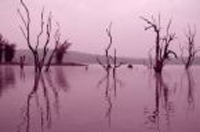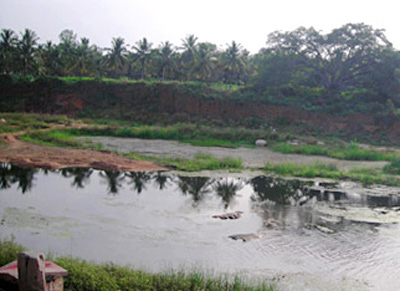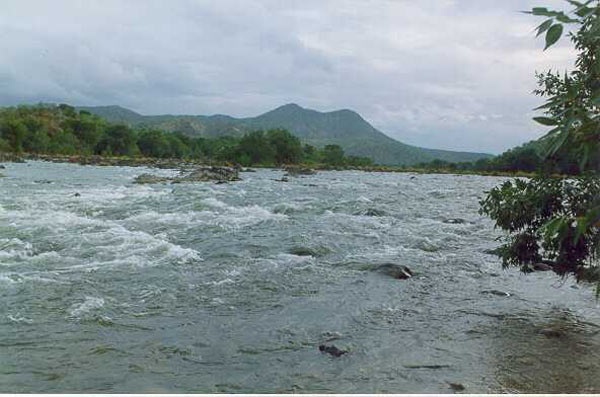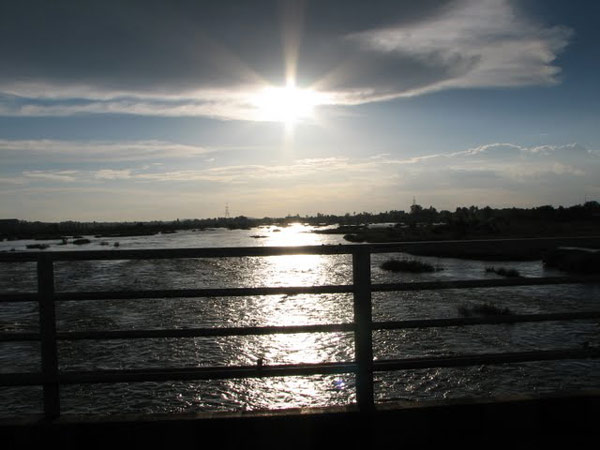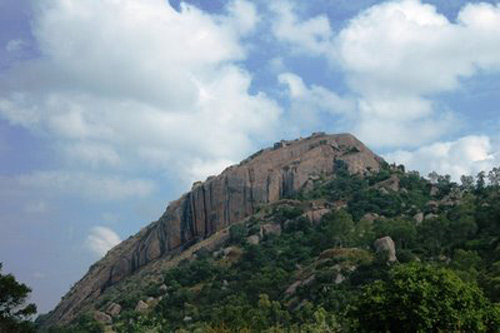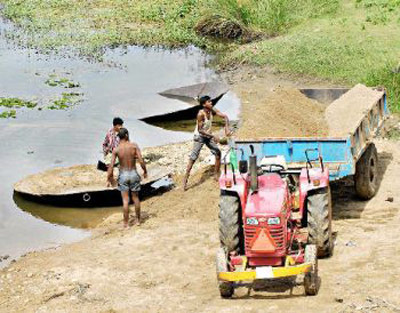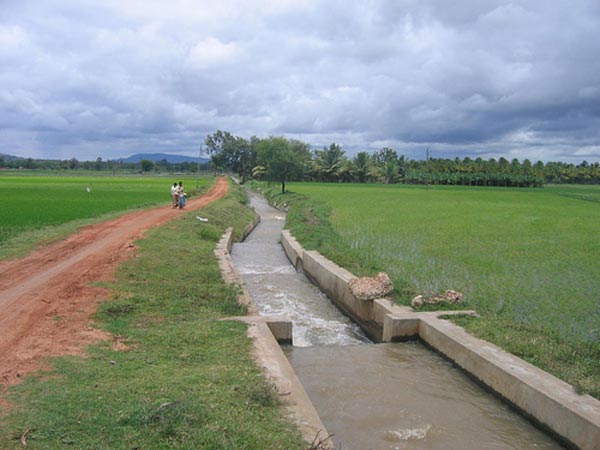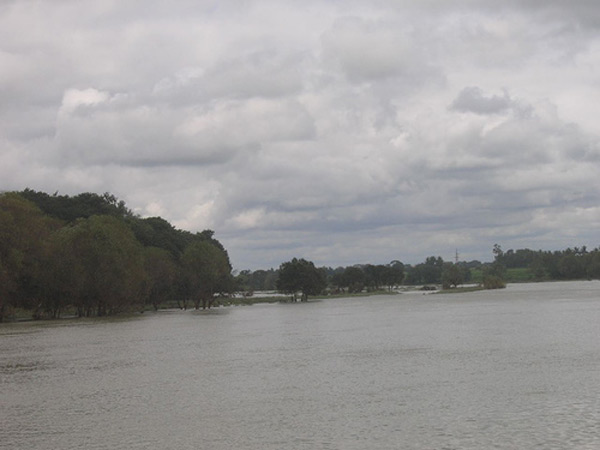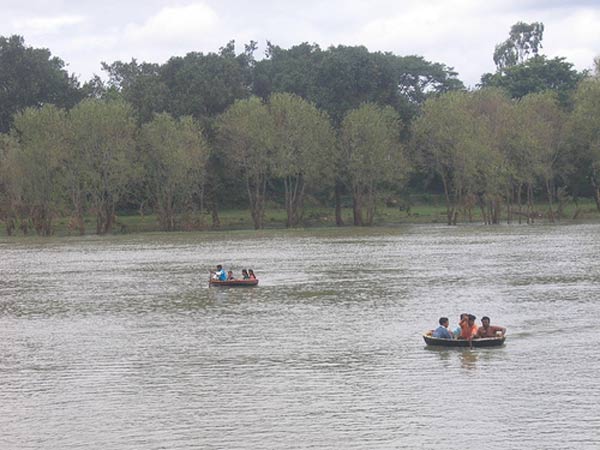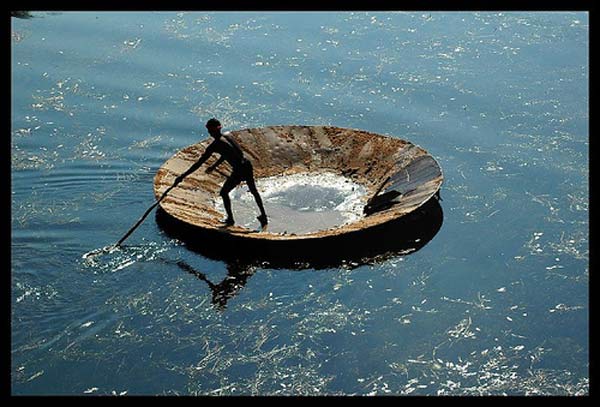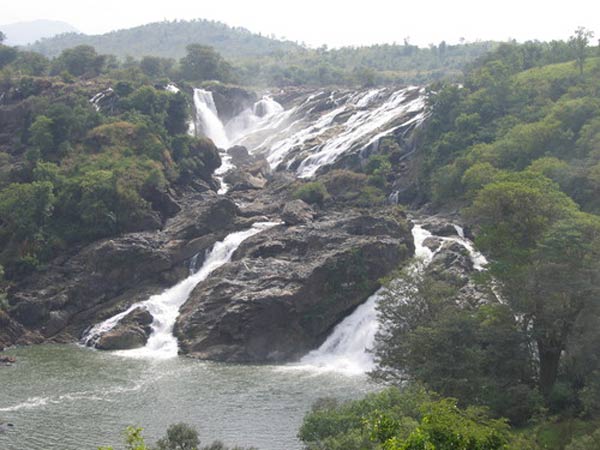Shimsha River
|
About:
|

The Shimsha River is a tributary of the larger Cauvery River and flows
through the state of Karnataka, India. Known for its scenic beauty and
historical significance, the Shimsha River originates in the Devarayanadurga
hills near Tumkur and flows for about 221 km before joining the Cauvery.
This river supports agriculture in the region and is a key source of water
for the Shimsha Hydroelectric Project, one of Karnataka’s oldest
hydroelectric plants.
Power generation: Shimsha has its waterfall at Shimshapura in Malavalli
Taluk. This is also the location of the Shimsha Hydro Electric Project which
has an installed capacity of 17,200 kilowatts. It was the first ever hydro
electric project in Asia. Kolar Gold Fields was supplied with the
electricity generated in the year 1902. Three years later Bangalore was
electrified. (Prjavani daily 16th Oct 08) The foundation stone for this
project was laid by Krishnaraja Wodeyar IV, the king of Mysore in December
1937.
|
Location info:
|
| The Shimsha River flows through Karnataka, primarily across districts such as
Tumkur, Mandya, and Chamarajanagar. The river flows past scenic areas and small
towns before merging with the Cauvery River.
|
Climate/Weather:
|
| Summer (March-May): Warm and dry, with temperatures ranging from 25°C to 35°C.
Monsoon (June-September): The region experiences heavy rainfall, which
rejuvenates the river and enhances the surrounding greenery.
Winter (October-February): Cool and pleasant, with temperatures between 15°C and
25°C, ideal for sightseeing. |
History:
|
|
Historically, the Shimsha River has been significant for supporting
agriculture and livelihoods in Karnataka. It has also played a role in early
hydroelectric development, with the Shimsha Hydroelectric Project
established in 1940. This project marked an important step in Karnataka’s
efforts toward harnessing hydroelectric power and managing water resources.
|
Interesting things to do:
|
| Picnicking by the River: The scenic banks of the Shimsha are perfect for
picnicking, especially around the falls and forested areas.
jathra/Car festival, an annual Car festival is held during Phalguna Masa shuddha
poornima day some where in the Month of March/April in Devarayanadurga. On this
day the chariot/car/Ratha of Sri Bhoga Narasimhaswamy is drawn in the main Ratha
beedhi of the hill town. The festival draws devotees from all over
Bangalore-Tumkur and surrounding region.
Visit Shimsha Falls: Located near Malavalli, the Shimsha Falls (also known as
Chunchi Falls) is a beautiful spot where the river cascades over rocky
terrain, especially picturesque during the monsoon.
|
Interesting things to Visit:
|
Shimsha Hydroelectric Project: Visit this historic power station, one of Karnataka’s oldest, to understand the state’s hydroelectric history.
BhogaNaraishma temple is at the base of the hill and Yoga Narasimha temple
is on top of the hill. Temple of Yoga Narasimha
|
Mobile range info:
|
| Most mobile networks provide coverage in towns and areas around the Shimsha
River, although certain rural or forested locations near the river may have
weaker signals.
|
How to reach?
|
| Nearest Railway Station: Tumkur and Mandya are the closest major railway stations. |
| Nearest Airport:The nearest airport is Kempegowda International Airport in Bangalore, about 120 km from the Shimsha River area. |
| Road Transport:The Shimsha River is accessible by road from Bangalore and
Mysore. Buses and taxis can be hired to reach popular spots along the river,
like Chunchi Falls. |
Nearest Visiting places:
|
| Tumkur district is an administrative district in the state of Karnataka in
India. The district headquarters are located at Tumkur. The district occupies an
area of 10,598 km2 and had a population of 2,584,711, of which 19.62%
were urban as of 2001. [1] It is a one and a half hour drive from Bangalore, the
capital of Karnataka.
The area of the district is 4158 m2. It consists chiefly of
elevated land intersected by river valleys. A range of hills rising to
nearly 4,000 feet (1,200 m) crosses it from north to south, forming the
watershed between the systems of the Krishna and the Kaveri. The principal
streams are the Jayamangala and the Shimsha. The mineral wealth of Tumkur is
considerable; iron is obtained in large quantities from the hill-sides; and
excellent building-stone is quarried. The slopes of the Devarayanadurga
hills, a tract of 18 m2., are clothed with forests, in which
large game abounds, including tigers, leopards, bears and wild hog. The
annual rainfall averages 39 inches.
|
Nearest Petrol Pump:
|
| Petrol pumps are available in nearby towns such as Tumkur, Mandya, and Maddur. It is advisable to refuel in these towns if planning to visit remote areas near the river.
|
Hotels/Lodge/Accommodation:
|
| Shimoga Hotel, Tumkur: Budget-friendly with comfortable amenities.
Royal Orchid Brindavan Garden Palace & Spa, Mysore: For a luxury experience near the Cauvery River.
Hotel Mayura River View, Srirangapatna: Ideal for visitors exploring nearby attractions.
|
Things to carry:
|
| Comfortable walking shoes for exploring the riverbanks.
Sun protection, including a hat, sunglasses, and sunscreen.
Camera or binoculars for capturing scenic views and wildlife.
Light snacks and water, especially if visiting remote areas.
Personal essentials, such as medications and first-aid supplies. |
Tips & Suggestions:
|
| Visit during the monsoon or winter for the best views of the river and waterfalls.
Exercise caution near the riverbanks, especially during the monsoon season, when water levels may rise quickly.
Respect local customs and avoid littering in natural areas.
If visiting Shimsha Falls, follow safety guidelines, as rocks around the falls can be slippery.
|
Help Line/Phone Number:
|
| Karnataka Tourism Helpline: 080-2235-2828 |
| Local Police Station (Tumkur):+91-816-227-7000 |


